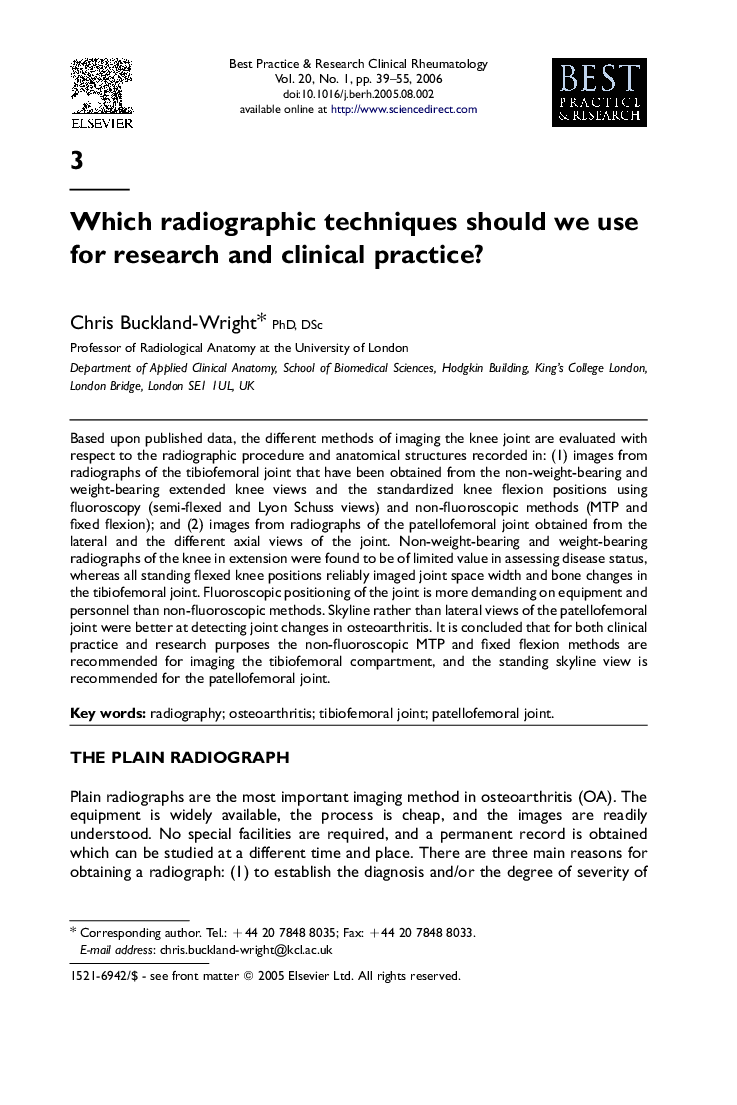| کد مقاله | کد نشریه | سال انتشار | مقاله انگلیسی | نسخه تمام متن |
|---|---|---|---|---|
| 3343547 | 1214430 | 2006 | 17 صفحه PDF | دانلود رایگان |

Based upon published data, the different methods of imaging the knee joint are evaluated with respect to the radiographic procedure and anatomical structures recorded in: (1) images from radiographs of the tibiofemoral joint that have been obtained from the non-weight-bearing and weight-bearing extended knee views and the standardized knee flexion positions using fluoroscopy (semi-flexed and Lyon Schuss views) and non-fluoroscopic methods (MTP and fixed flexion); and (2) images from radiographs of the patellofemoral joint obtained from the lateral and the different axial views of the joint. Non-weight-bearing and weight-bearing radiographs of the knee in extension were found to be of limited value in assessing disease status, whereas all standing flexed knee positions reliably imaged joint space width and bone changes in the tibiofemoral joint. Fluoroscopic positioning of the joint is more demanding on equipment and personnel than non-fluoroscopic methods. Skyline rather than lateral views of the patellofemoral joint were better at detecting joint changes in osteoarthritis. It is concluded that for both clinical practice and research purposes the non-fluoroscopic MTP and fixed flexion methods are recommended for imaging the tibiofemoral compartment, and the standing skyline view is recommended for the patellofemoral joint.
Journal: Best Practice & Research Clinical Rheumatology - Volume 20, Issue 1, February 2006, Pages 39–55